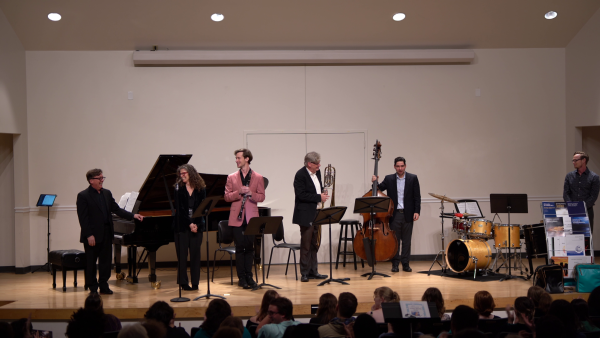“Killers” by Iron Maiden
Let’s take a look at one of the titans of early traditional metal, Iron Maiden. The band is world-famous with possibly the most iconic mascot in music history, Eddie the Head, who is on all of the album covers along with countless shirts, figures, posters, and other merchandise. I think we should check out one of their early albums that has a recognizable picture but not many listened to it, “Killers.”
The album opens with “The Ides of March,” a great instrumental to start showcasing the skills of the band. The transition is blended so perfectly that it sounds like an extension into the next song, “Wrathchild.” This song is about a man on a search to get vengeance on his father who abandoned him when he was a baby.
Then comes “Murders in the Rue Morgue,” which is named after and is based off the Edgar Allan Poe story about two women who were murdered in quite a strange way. This one has much more of a punk rock feel to me rather than metal, but it makes it more interesting. After that is “Another Life,” where they made the interesting decision of using the same chorus three times with the rest of the song consisting of solos.
“Genghis Khan” is the last instrumental off the album and named after the infamous conqueror who made one of the biggest empires in history. This song has some incredible drumming and guitar to really make an example of how talented they are as musicians. “Innocent Exile” is next on the album and seems to be a sequel to “Murders in the Rue Morgue” as it follows the same narrator on the run.
Then it is the title track for the album, “Killers,” which talks about a killer who is stalking and killing people in the subway. The lyrics speak as if warning listeners about the killer until it’s revealed he’s detailing his own killings. This self-titled number is a cool song that really amps up the album.
This next one didn’t release with the original European versions of the albums but was on the U.S. versions. “Twilight Zone” is named after the classic TV show known for its strange stories. It tells a story about a ghost who haunts the woman he loves waiting for her to die so they can be together again because he can’t handle the loneliness.
Instead of following the parable in the Bible that it is named after, “Prodigal Son” rather tells a story of someone who dabbled in black magic and is now paying the price for it. Meanwhile, the original story in the Bible is about two sons. One son asks his father for his inheritance and squanders it, and the other remains loyal to his father. Despite the son feeling foolish for his reckless spending, their father celebrates him for becoming wiser from his experience.
Next is “Purgatory,” picking up the pace of the album to an energy-filled, speedy song with punk influence. This one is focused on Purgatory, which in Catholicism is the place where souls have a final purification before going to Heaven. The last song on the album is “Drifter” with a positive outlook about a drifter on the road who knows each day is a new day and just wants to get away and sing his song everywhere.
Overall, it’s not the most iconic album, nor does it have the most iconic songs, but there are some gems here. My top picks are “Murders in the Rue Morgue,” “Innocent Exile,” “Killers,” “Twilight Zone” and “Purgatory.”

















Rob • Apr 13, 2023 at 5:50 pm
GREAT ALBUM!!! Not their best but it’s only their second album and a foreshadowing of what’s to come. Forty+ years later , in 2021 they release Senjutsu….. listen to “Hell On Earth” and simply absorb the greatness that is IRON -freaking-MAIDEN !!!